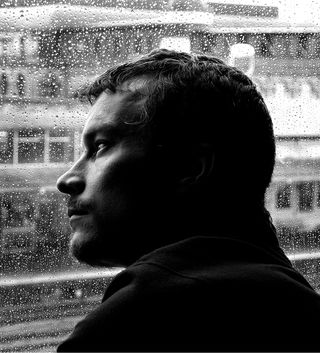Depression
15 Reasons Why People With Depression Don’t Get Treatment
A new study examines barriers to receiving treatment for depression.
Posted October 18, 2018 Reviewed by Jessica Schrader

Major depressive disorder is a mental disorder characterized by affective symptoms (e.g., depressed mood), cognitive symptoms (e.g., difficulty with concentration), and somatic symptoms (e.g., appetite or weight changes). Not all depressed individuals who feel they require treatment for depression receive it. What are some barriers to receiving treatment for depression?
In a recent paper, published in the August issue of Psychiatric Services, Chekroud and colleagues examine reasons why people diagnosed with depression do not obtain treatment — even though they acknowledge the need for it. A model to identify such individuals is also discussed.
Study of barriers to getting treatment for depression
Less than half of American adults with a mental illness receive treatment. According to 2014 data, for instance, only 19 of 44 million American adults with a mental illness obtained mental health treatment.
The current study investigated barriers to receiving treatment for those diagnosed with depression the previous year.
Data were obtained from the 2008-2014 National Survey on Drug Use and Health. The sample consisted of 20,785 individuals who had been diagnosed with major depression. Most were aged 18-49 years and White (77 percent). Half had private health insurance.
Participants who acknowledged the need for treatment, but received none (30 percent of the sample), were provided a list of 15 potential justifications. They were asked: “Which of these statements explains why you did not get the mental health treatment or counseling you needed?”
Over half of participants chose only one statement—while 18 percent chose two, 12 percent chose three, etc.
Top reasons for not getting treatment for depression
The list of 15 reasons and endorsement rate for each is presented below (ordered from lowest to highest, based on endorsement rate):
1. Had no transportation or treatment too far (5.8 percent)
2. Didn’t want others to find out (6.5 percent)
3. Health insurance didn’t cover it (6.5 percent)
4. Concern about effect on job (8.1 percent)
5. Didn’t think I needed it at that time (8.6 percent)
6. Concerned about confidentiality (9.7 percent)
7. Didn’t think treatment would help (10.9 percent)
8. Concerned about opinion of neighbors (11 percent)
9. Not enough health insurance coverage (11.7 percent)
10. Didn’t have time/too busy (14.2 percent)
11. Thought I might be committed or forced to take meds (15.2 percent)
12. Some other reason (15.3 percent)
13. Didn’t know where to go for service (16.7 percent)
14. Thought I could handle it without treatment (22.2 percent)
15. Couldn’t afford the cost (47.7 percent)
Overall, more than half of participants cited financial factors for not receiving treatment (therapy or medications).
These financial concerns may reflect mistaken assumptions. As Chekroud et al. observe, “some generic antidepressants cost less than $10 per month (free under Medicare Part D and Medicaid and the Children’s Health Insurance Program).”
Some statements that depressed individuals endorsed could also reflect symptoms of depression; for example, it is understandable why a person with depression would endorse the pessimistic belief that treatments for depression will not work.
The results of this study also provided support for the researchers’ model, which identified 72 percent of people who acknowledged needing treatment, but did not initiate it. In addition, the model predicted 10 of 15 explanations given as barriers to receiving treatment.
The most predictive factor for not getting treatment was suicidal ideation. People who had been seriously considering killing themselves (e.g., making suicide plans) were less likely to seek treatment.

How to reduce barriers to receiving treatment for depression?
The next step in this line of research is determining how to minimize the barriers.
Because low energy and a lack of motivation are essential features of depression, “aggressive outreach may be required to encourage some individuals to begin and remain in care ... and thus better targeting of patients in need of encouragement may make outreach cost-effective.”
The public needs to be informed that treatment—at least pharmacological treatment (medications)—is not necessarily expensive; cheaper options are available.
In conclusion, both practical and psychological barriers to treatment need to be addressed. Practical barriers include cost concerns (whether real or assumed), availability of transportation, not knowing where to go for treatment, etc. Psychological barriers include obstacles such as worries about stigmatization and doubts about the effectiveness of treatment. Addressing both barriers will increase the likelihood that millions of depressed Americans will receive needed treatment for depression.
Facebook image: Africa Studio/Shutterstock
LinkedIn image: Nopphon_1987/Shutterstock
References
Chekroud, A. M., Foster, D., Zheutlin, A. B., Gerhard, D. M., Roy, B., Koutsouleris, N.,...Krystal, J. H. (2018). Predicting barriers to treatment for depression in a U.S. national sample: A cross-sectional, proof-of-concept study. Psychiatric Services, 69(8):927-934.




